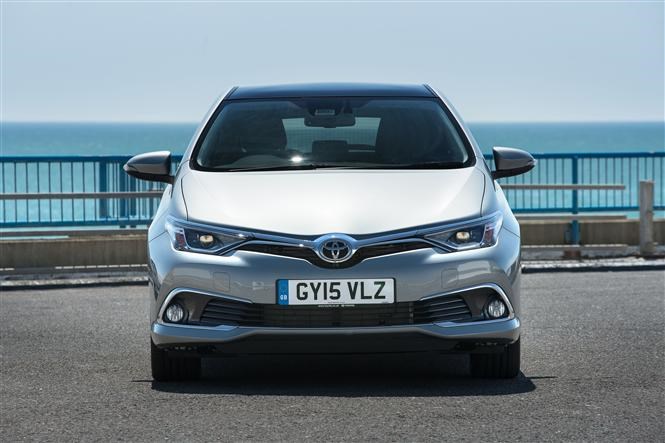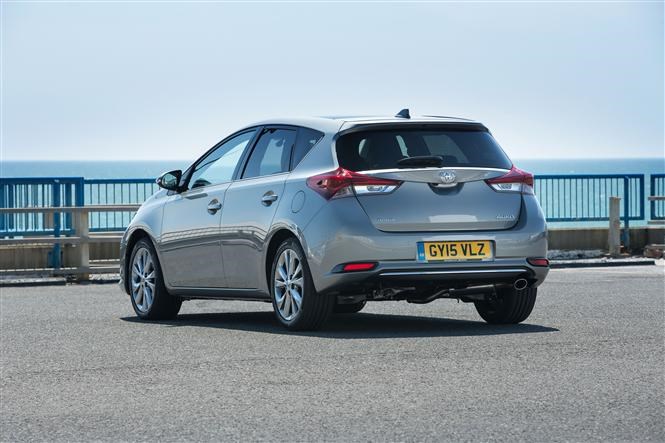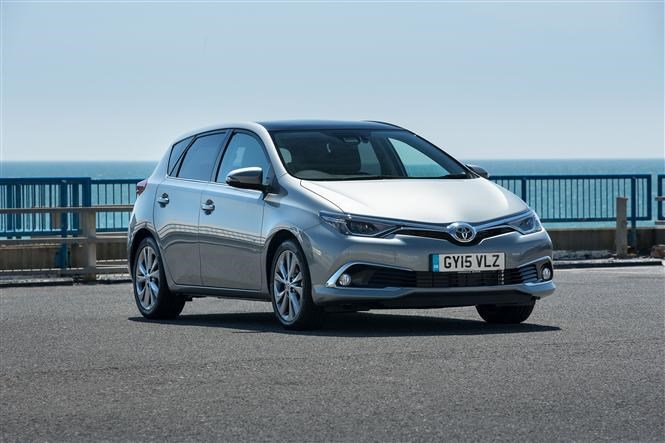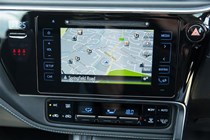Offering one of the most diverse ranges in the segment, including a hybrid choice, the Toyota Auris is famed for its driver comfort and easy, stress-free driving. Now, thanks to a mid-life facelift, handling and comfort promises to be even better, with improvements in the cabin offering more luxury too.
In a hugely popular segment which includes the likes of the Volkswagen Golf, Ford Focus and Vauxhall Astra, the Auris has a big challenge on its hands to stand out from the crowd.
We’ve been testing the revised hatchbck for the first time with a brand new 1.2-litre petrol engine to find out how the changes stack up on the road.
Sportier look
A number of revisions to the design have been introduced to give the Auris a sportier look including new headlamps, a new bumper and new LED tail lamps.

Inside there’s a new centre console with a larger seven-inch touchscreen system (standard on this trim) and more luxurious materials used throughout, plus there’s a revamped rev counter and trip computer too.
The car has a more sophisticated look inside and out and the majority of the materials used around the cabin are of high quality with only a few cheap plastics lurking placed around the door pockets and centre cubby.
New petrol engine
Introduced to the range for the first time this year is a 1.2-litre turbocharged petrol engine which offers 114bhp and 185Nm of torque enabling the car to accelerate from 0-62mph in 10.1 seconds.

Toyota expects this new engine to account for 15 percent of total sales in the UK and running costs impress with a combined fuel economy of 58.9mpg and CO2 emissions of 112g/km which although not class-leading, will still keep tax costs low for retail buyers and company car drivers.
To accompany the sportier style changes in the new Auris, Toyota has also made chassis and handling tweaks to offer not only greater comfort but also more engagement behind the wheel. The steering offers more feedback than before and it’s well-weighted too. It’s still not the most exciting car to drive but the soft suspension does an excellent job of soaking up the potholes and bumps in the road and the new engine is smooth and quiet.
Greater sound insulation around the car helps keep road and wind noise to a minimum and thanks to the higher torque available at lower revs courtesy of the engine’s turbocharger, the Auris feels quick away from the lights and rarely struggles when travelling up steep hills. There’s plenty of grip when you get up to speed too with virtually no body roll produced in the corners either.

Icon trim
Our test car comes in mid-range Icon trim which is expected to account for around 20 percent of all Auris sales. The highlights from the standard equipment list include DAB Radio, Bluetooth, 16-inch alloy wheels, reversing camera, leather steering wheel and gear knob and automatic air-con – no cruise control or parking sensors as standard though, which is disappointing.
The centre console is easy to navigate around and control and the car is very practical with lots of storage options littered around the cabin, there’s also plenty of head and legroom for four adults to travel in comfort. It’s not the most exciting place to sit, though, and although the quality of materials are generally very good, there is a lack of creative flair in the cabin.
Dimensions of the car have remained unchanged and the boot is still one of the biggest in the sector with 435 litres available. Collapse the rear seats and this expands to 1,199 litres.

Optional on our test car was Toyota’s Safety Sense pack which combines popular safety systems like automatic high beam headlights, traffic sign recognition, lane departure warning and a collision prevention system which can bring the car to a complete stop if it thinks it needs to up to speeds of 30mph. All impressed while on test, but we are yet to have confirmation on pricing for this pack.
Verdict
Our test car costs £18,295 to buy as standard and we think that’s pretty good value for money considering what’s on offer here. The look and feel of the new Auris is more premium and the revisions to the handling and steering definitely improve the drive.
Comfort levels rival the best the segment has to offer too but the car does lack excitement both on the road and inside the cabin. We’d also suggest moving up a trim to get more kit as standard.
The revised Toyota Auris is available to order on July 1 with first deliveries expected in September.
To find out more about the Toyota Auris – read our full review here.
Just so you know, we may receive a commission or other compensation from the links on this website - read why you should trust us.








